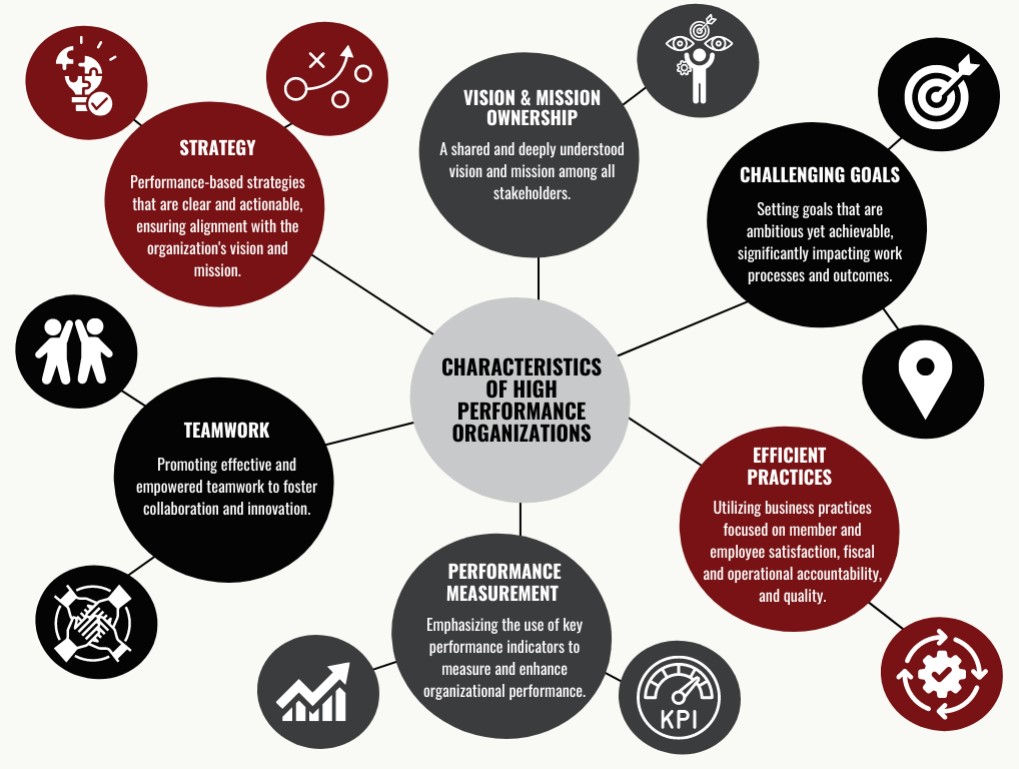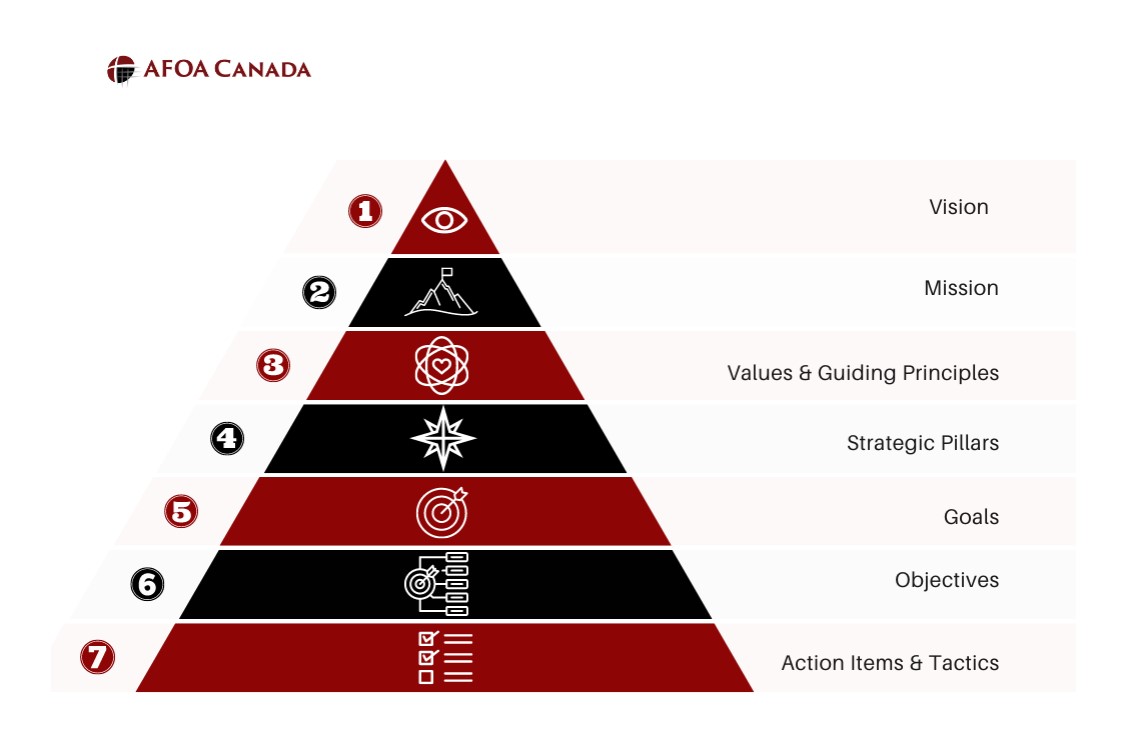Strategic Planning Tools
PLANNING & ORGANIZATION
Effective planning and organization are fundamental for Indigenous communities and organizations striving to achieve high performance and sustainable growth. This fact sheet delves into the importance of strategic planning, the characteristics of high-performance organizations, the planning process, guiding principles of planning, and major types of planning critical for Indigenous communities.
Characteristics of High-Performance Organizations

Planning Process
Strategic management in Indigenous organizations involves assessing the current situation, planning future strategies, implementing them, and evaluating their effectiveness.
This process is characterized by:
- Community-driven initiatives that empower members.
- Inclusion of traditional knowledge and prioritization of land stewardship.
- Active engagement and communication with the community to ensure everyone’s voice is heard.
Guiding Principles of Planning
Adopted from the British Columbia First Nations Data Governance Initiative, the following principles guide Indigenous planning towards transformational change:
- Culture and Languages: Acknowledging the foundational role of culture and languages in identity.
- Community-Driven, Nation-Based:Emphasizing community and nation-defined priorities.
- Community Engagement: Ensuring all voices within the community are valued and heard.
- Communication: Maintaining clear and effective communication.
- Collaboration: Working collectively for the community and nation’s benefit.
- Connection: Recognizing the interconnectedness of all elements.
- Commitment: Reflecting a dedication to future generations in all endeavors.
Types of Major Planning
- Strategic Planning: Outlining long-term goals and strategies to achieve the organization’s vision and
mission. - Economic Development Planning: Focusing on strategies for sustainable economic growth and
development. - Comprehensive Community Planning: Developing holistic plans that consider all aspects of
community life and well-being. - Strategic Emergency Management: Preparing for and managing emergencies to ensure community
resilience and safety.
- Strategic Planning: Outlining long-term goals and strategies to achieve the organization’s vision and
References & Resources
- British Columbia First Nations Data Governance Initiative – Community Planning Tools
- British Coumbia First Nations Data Governance Initiative – The 7Cs: A First Nations’ Guide to
Planning and Reporting Standards - Aboriginal Financial Officers Association of Canada – Strategic Management and Accountability for
First Nations
STRATEGIC PLANNING
Strategic planning is a holistic approach that provides Indigenous communities and organizations with a clear vision, objectives, and a roadmap for the future. It encompasses the community’s or organization’s values and offers action plans to achieve its vision. As communities and organizations evolve, so too can their strategic plans. This fact sheet outlines the five phases of strategic planning, emphasizing its importance in guiding decision-making and ensuring sustainable development.
Phase 1 - Historical Foundation
- Goal: Understand the community’s or organization’s history through oral histories, historical records, stories, and creation stories to build a shared understanding of its current state.
- Importance: This phase helps acknowledge the past and its impact on the present, ensuring that future plans are informed and respectful of historical contexts.
Phase 2 - Current State Assessment
Goal: Develop a comprehensive Community/Organization Profile, including facts, statistics, and perceptions about the community or organization.
Importance: Provides a snapshot of the current situation, identifying strengths, weaknesses, opportunities, and threats (SWOT analysis) to inform strategic decision-making.
Phase 3 - Vision & Direction
- Goal: Define the community’s or organization’s future through vision, mission, and values statements.
- Importance: Sets the overall direction for the strategic plan, ensuring all members share a common
understanding of the desired future state.
Phase 4 – Strategic Implementation
- Goal: Develop an Action Plan that prioritizes and organizes actions to achieve the goals and objectives.
- Importance: Translates strategic goals into actionable steps, ensuring the plan is realistic and
achievable.
Phase 5 - Progress & Evaluation
- Goal: Implement mechanisms for monitoring and evaluating the strategic plan’s effectiveness and impact.
- Importance: Allows for ongoing assessment and adaptation of the strategy, ensuring it remains relevant and effective in achieving the community’s or organization’s goals.
Strategic Plan Components
- Engagement with Key Stakeholders: To capture a broad spectrum of perspectives, fostering a deep understanding of the community’s aspirations and challenges.
- Comprehensive Needs Assessment: Identifying critical issues to inform strategic priorities and ensure the strategic plan addresses real community needs.
- Clear Goals, Objectives, and Action Plans: Detailing the strategies, performance indicators, and resource requirements to support the strategic plan’s implementation.
- Regular Monitoring, Evaluation, and Governance: Establishing a governance framework to evaluate progress against the strategic plan, enabling responsive adjustments and maintaining alignment with community values.
The strategic planning process is a critical pathway for Indigenous communities and organizations to define their vision, set actionable goals, and implement effective strategies for sustainable development. It is important the each organization utilization tailored approaches to ensure that the plan is inclusive, reflective of the community’s values, and adaptable to changing circumstances, paving the way for a future where cultural integrity and development go hand in hand.
Strategic Planning Framework

References & Resources

